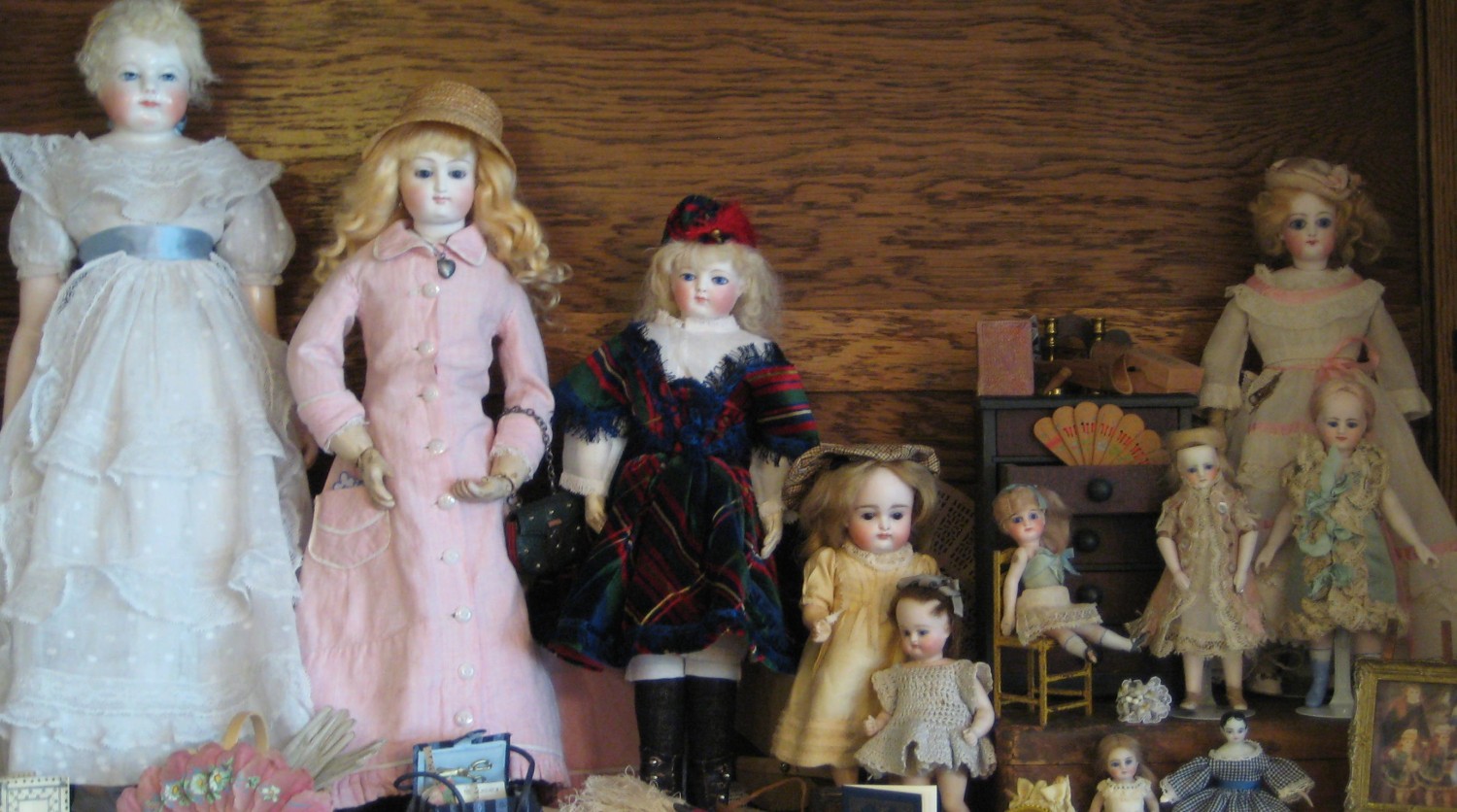Merriam Webster defines provenance as: “the history of ownership of a valued object or work of art or literature.”
As doll collectors, we rarely get to know anything about the provenance of a doll we purchase. We have all been told questionable stories of a doll’s history. How often has a dealer told you that a doll is from his or her “private collection”?
But who owns the provenance of an antique doll? Do you think I have the right to share the story of what happened with a doll after I no longer owned it? If not, stop reading now.
Here’s my story.
I purchased this early German China doll at the Gaithersburg, MD doll show many years ago. Since she was quite raggedy, I got a very good deal on her. She is a “Biedermeier” type child doll with a solid dome head, painted eyes and kid body. I was struck with her resemblance to a French Huret and loved her beautiful pale blue eyes.
Redressing her was a labor of love. I adapted patterns from Louise Hedrick’s beautiful book, A French Fashion Doll’s Wardrobe for her undies, chemise and slip. Her dress, made from vintage dotted-swiss fabric, was adapted from several different dress patterns in Michelle Hamilton’s book, Sewing Victorian Doll Clothes.
I found an antique blue velvet hat and antique leather boots for her. Fine reproduction socks completed her costume.
The dress made me especially proud. Fitting it perfectly required some creative adjustments. I remade the top of the bodice twice and used some creative pressing to make it fit her shoulder plate perfectly. Very tiny piping and some of my finest hand stitching went into this dress.
I loved dressing her, but when I was done, I didn’t mind letting her go.
To buy this Simon & Halbig 7″ mignonette, with her fine triple-braid wig, required some creative financing, so my beautiful China had to go.
I listed her on eBay and was very pleased with her selling price.
Several months later, at the Gaithersburg doll show, I was surprised to discover my dotted-swiss dress being worn by a Parian doll in a display case in a dealer’s booth. It made me take a double take. Was that really my dress? I studied it a bit and realized that even though it was too big for the Parian and the dealer had pinned it to fit, it was my dress.
When I asked the dealer about it, she told me that she had bought the dress from a collector. When I inquired about the doll, she said she was never shown a doll, but was just offered the dress. She said that the collector she got it from was a stickler for antique and original costumes, so that was probably why she sold the dress.
Last year, at the UFDC national convention in Washington, DC, there was a special exhibit of dolls, costumes and accessories in la mode enfantine. I spent a good deal of time studying the exhibit because it is the style of dress most desired for my Huret.
In one of the display cases, with a collection of accessories, there sat the antique blue velvet hat that had been worn by my doll. It made me smile.
It is not often that I get to know what happens to my dolls and their trousseaux after I sell them.
So, is this story mine to tell? Or does the doll’s new owner own her provenance? Did my right to the doll’s story end when I sold her? How would you feel about a seller telling stories about a doll you bought from them?




I think your provenance is what ever it is. What are the odds of finding two of your own pieces in two different doll shows? Very cool…..